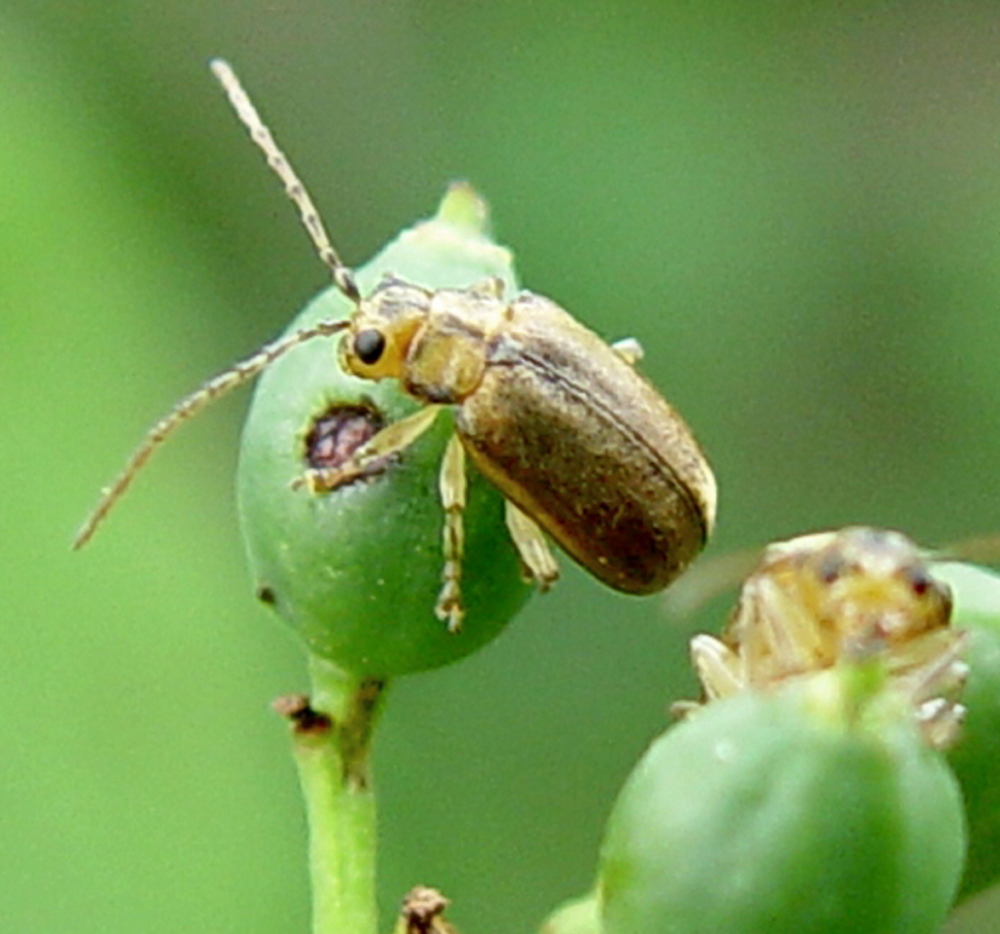Viburnums have finished blooming this season, but they will continue making landscapes attractive well into the winter. A good plant is interesting even when it is not in bloom, and many viburnums provide great fall foliage, attractive branching habits and winter berries.
They are a well-traveled species: Many are native to the Northeast, others come from Asia or Europe. And several are common in the Maine woods. Some natives I rarely see in the wild, but during a recent fishing trip in western Maine, nannyberries, or viburnum lentago, were growing and blooming prolifically. I also saw viburnum alnifolium, or hobblebush, growing as an understory plant along the rivers.
When Nancy and I bought our first dozen shrubs the year after we had our home built in 1975, two of them were viburnums: viburnum opulus trilobum or highbush cranberry, a native, and viburnum opulus “sterilis” that now has the new name “roseum” even though the blossoms are white. (Its common name is European snowball viburnum or snowball bush.)
Viburnums have just one disadvantage – a pest called the viburnum leaf beetle (VLB), which has become well established in the Eastern United States and has even made it to the West Coast. It was first noticed in Ontario, Canada, in 1947; by 1978 breeding colonies had established themselves there. It showed up in Maine in 1994.
The beetle eats viburnum leaves during both its larvae stage, usually late April through May, and its adult stage, in July and August, according to an online pamphlet from Cornell University in New York. The pests – their botanical name is Pyrrhalta viburni – can strip all the leaves from a viburnum in a single season. Several years of that will kill the plant.
The two viburnums we planted in 1976 were attacked and defoliated for several years in the late 1990s, and one spring they did not leaf out at all. We removed them and replaced them with a rhododendron on one end of the house and a PeeGee hydrangea at the other. The garden evolved.
A few years later, though, snowball viburnum blossoms appeared right where the original snowball bush had died. Apparently there was enough life in the roots for the plant to resprout, and it says something about my powers of observation that I didn’t notice the reborn plant until it was in full bloom with its big white blooms the size of snowballs. That snowball continued blossoming every year until this year, when it was again decimated by VLB. I cut it to the ground as part of our cleanup before we opened our garden for a tour.
Oddly, another snowball viburnum located about 200 feet away, where Nancy and I install rescued plants, suffered no VLB damage at all.
Enough history. What should you do to grow viburnums in your own yard?
If starting fresh, plant viburnums that are VLB-resistant. As a general rule, viburnums with thicker leaves do better than ones with thinner leaves.
VLB-resistant viburnums include both native and non-native varieties, although none of the natives are listed as the most resistant, according to researchers at Cornell. The good news is that the non-native varieties are well-behaved, not at all invasive and have some attributes that you can’t get from the natives.
Natives with good resistance to the bug include V. alnifolium or hobblebush; V. cassinoides or witherod; V. lentago or nannyberry; and V. prunifolium or blackhaw.
The most resistant imports include V. carlesii or mayflower viburnum, which is wonderfully fragrant; V. plicatum or doublefile viburnum, known for its great branching habit and fall color; and V. rhytidophylloides or leatherleaf viburnum.
The doublefile viburnums, and there are several named varieties in different sizes, are the easiest to grow.
When we pick plants or shrubs for our garden, we go through a checklist: Does it have fragrance? Does it attract pests? Does it require a lot of pruning or other maintenance, and so on.
We put in a mayflower viburnum for its flowers, nice fragrance and lack of demands. We selected the doublefile viburnum because it is undemanding, too, plus it can tolerate a semi-shaded location while adding winter interest with its growth habit of vertical branches. (Most shrubs grow from a center, toward the sky. But with doublefile viburnums, the branches usually grow up a bit and then develop branches sideways, separated by about a foot and growing parallel to the ground, an unusual shape in the garden, and one that’s especially attractive when covered with snow or ice.)
If you now have or want to plant viburnums that are more VLB-susceptible, you need to take care of them. Sometime after the first frost and before April, search the plants’ branch tips. The VLB egg sacs create little bumps in a straight line along the branches. Trim out all of the tips with egg sacs, and you should be good for the year.
While there is no biocontrol that specifically targets viburnum leaf beetles, some beneficial insects – including Asian lady beetles, lacewing larvae and spined soldier bugs – will eat them. Buy these insects online at places like thebeneficialinsectco.com or gardensalive.com.
I enjoy any excuse to get outside during slightly warm March days – trimming out egg sacs definitely qualifies. All I have to do is remember to put pruning viburnums on my March to-do list.
Send questions/comments to the editors.



Success. Please wait for the page to reload. If the page does not reload within 5 seconds, please refresh the page.
Enter your email and password to access comments.
Hi, to comment on stories you must . This profile is in addition to your subscription and website login.
Already have a commenting profile? .
Invalid username/password.
Please check your email to confirm and complete your registration.
Only subscribers are eligible to post comments. Please subscribe or login first for digital access. Here’s why.
Use the form below to reset your password. When you've submitted your account email, we will send an email with a reset code.